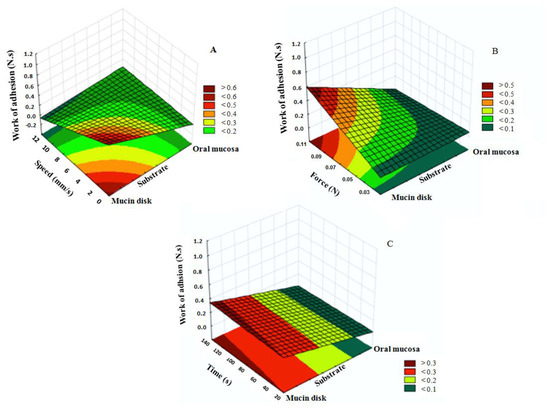Disk Graph 2 1 15 Mm

When running Online DiSC Classic 2.0 Profiles and DiSC Classic 2 Plus Profiles in your EPIC Account, you have the ability to turn on or off Graphs 1 and 2, and the tally box scores. http://zqwidq.xtgem.com/Blog/__xtblog_entry/18988190-apple-version-of-photoshop#xt_blog.
First, a little information about each of the graphs:
The results of a DISC questionnaire are usually presented in the form of a DISC Graph (or a set of graphs, known as a Profile Series).This chapter looks at the different types of DISC graphs available, the four DISC factors (Dominance, Influence, Steadiness and Compliance) and the twelve standard 'sub-traits' that are derived from these four factors. The standard manufacturing ranges shown in the following table can be reduced by 1/2 or ¼ for an additional cost. Hastelloy C-276 / Alloy C-276 is available only with standard manufacturing range and 1/2 range. Standard Manufacturing Ranges for Solid Metal Disks Before the Disk is Stamped. Feb 07, 2016 When looking at the graphs read your Natural Style graph first. Your Natural Style graph is on the right. This graph describes how you tend to behave naturally in non-stressful conditions. To read your natural graph start with the red “D” bar on the left and end with the blue “C” bar on the right. These disks are available in steel, stainless steel, aluminum, brass and bronze are stocked for quick shipment at competitive prices. Contact Wagner for large quantity pricing. Here at Rotary Cutter Supply we carry a wide selection of disks, shafts, washers, spiders and more for your PTO needs. Browse our online catalog’s wide selection to find the right products, at the right price 24/7.
Graph 1: These are your “Most” responses for each of the four scales (D, i, S, and C).
Graph 2: These are your “Least” responses for each of the four scales.
Graph 3: This graph is the result of combining your “Most” choices with your “Least” choices and is used to determine your highest DiSC dimension, Intensity Index scores, and Classical Profile Pattern. (Graph 3 is automatically included in the Online DiSC Classic 2.0 and DiSC Classic 2 Plus Reports).
Disk Graph 2 1 15 Mm Equals
Tally Box Scores: Shows a summary and the differences of your “Most” and “Least” choices for each of the scales.

When assigning an access code for the Online DiSC Classic 2.0 or DiSC Classic 2 Plus Reports, you’ll see the Report Options below:
Disk Graph 2 1 15 Mm To Inches
Depending on the options selected above the resulting DiSC report will include one of 4 configurations:
Graph 3 only
Graph 3 and Tally Box Scores
Graphs 1, 2, and 3
Graphs 1, 2, 3, and Tally Box Scores
Just check the options that you prefer to include or exclude from your DiSC Profiles.
Questions about DiSC?
Call 1-800-278-1292 Optimusb 7 2 mac crack download.
In geometric graph theory, a unit disk graph is the intersection graph of a family of unit disks in the Euclidean plane. That is, it is a graph with one vertex for each disk in the family, and with an edge between two vertices whenever the corresponding vertices lie within a unit distance of each other. Mountain duck 2 3 download free.
They are commonly formed from a Poisson point process, making them a simple example of a random structure.
Definitions[edit]
There are several possible definitions of the unit disk graph, equivalent to each other up to a choice of scale factor:
- A graph formed from a collection of points in the Euclidean plane, in which two points are connected if their distance is below a fixed threshold.
- An intersection graph of equal-radius circles, or of equal-radius disks (see Fig. 1).
- A graph formed from a collection of equal-radius circles, in which two circles are connected by an edge if one circle contains the centre of the other circle.

Properties[edit]
Every induced subgraph of a unit disk graph is also a unit disk graph. An example of a graph that is not a unit disk graph is the star K1,7 with one central node connected to seven leaves: if each of seven unit disks touches a common unit disk, some two of the seven disks must touch each other (as the kissing number in the plane is 6). Therefore, unit disk graphs cannot contain an induced K1,7 subgraph.
Applications[edit]
Beginning with the work of Huson & Sen (1995), unit disk graphs have been used in computer science to model the topology of ad hoc wireless communication networks. In this application, nodes are connected through a direct wireless connection without a base station. It is assumed that all nodes are homogeneous and equipped with omnidirectional antennas. Node locations are modelled as Euclidean points, and the area within which a signal from one node can be received by another node is modelled as a circle. If all nodes have transmitters of equal power, these circles are all equal. Random geometric graphs, formed as unit disk graphs with randomly generated disk centres, have also been used as a model of percolation and various other phenomena.[1]
Computational complexity[edit]
If one is given a collection of unit disks (or their centres) in a space of any fixed dimension, it is possible to construct the corresponding unit disk graph in linear time, by rounding the centres to nearby integer grid points, using a hash table to find all pairs of centres within constant distance of each other, and filtering the resulting list of pairs for the ones whose circles intersect. The ratio of the number of pairs considered by this algorithm to the number of edges in the eventual graph is a constant, giving the linear time bound. However, this constant grows exponentially as a function of the dimension (Bentley, Stanat & Williams 1977).
It is NP-hard (more specifically, complete for the existential theory of the reals) to determine whether a graph, given without geometry, can be represented as a unit disk graph.[2] Additionally, it is probably impossible in polynomial time to output explicit coordinates of a unit disk graph representation: there exist unit disk graphs that require exponentially many bits of precision in any such representation.[3]
However, many important and difficult graph optimization problems such as maximum independent set, graph coloring, and minimum dominating set can be approximated efficiently by using the geometric structure of these graphs,[4] and the maximum clique problem can be solved exactly for these graphs in polynomial time, given a disk representation.[5] Even if a disk representation is not known, and an abstract graph is given as input, it is possible in polynomial time to produce either a maximum clique or a proof that the graph is not a unit disk graph,[6] and to 3-approximate the optimum coloring by using a greedy coloring algorithm.[7]
When a given vertex set forms a subset of a triangular lattice, a necessary and sufficient condition for the perfectness of a unit graph is known.[8] Adobe photoshop elements 2020 18 1. For the perfect graphs, a number of NP-complete optimization problems (graph coloring problem, maximum clique problem, and maximum independent set problem) are polynomially solvable.
See also[edit]
- Barrier resilience, an algorithmic problem of breaking cycles in unit disk graphs
- Indifference graph, a one-dimensional analogue of the unit disk graphs
- Penny graph, the unit disk graphs for which the disks can be tangent but not overlap (contact graph)
- Coin graph, the contact graph of (not necessarily unit-sized) disks
- Vietoris–Rips complex, a generalization of the unit disk graph that constructs higher-order topological spaces from unit distances in a metric space
- Unit distance graph, a graph formed by connecting points that are at distance exactly one rather than (as here) at most a given threshold
Notes[edit]
- ^See, e.g., Dall & Christensen (2002).
- ^Breu & Kirkpatrick (1998); Kang & Müller (2011).
- ^McDiarmid & Mueller (2011).
- ^Marathe et al. (1994); Matsui (2000).
- ^Clark, Colbourn & Johnson (1990).
- ^Raghavan & Spinrad (2003).
- ^Gräf, Stumpf & Weißenfels (1998).
- ^Miyamoto & Matsui (2005).
References[edit]
- Bentley, Jon L.; Stanat, Donald F.; Williams, E. Hollins, Jr. (1977), 'The complexity of finding fixed-radius near neighbors', Information Processing Letters, 6 (6): 209–212, doi:10.1016/0020-0190(77)90070-9, MR0489084.
- Breu, Heinz; Kirkpatrick, David G. (1998), 'Unit disk graph recognition is NP-hard', Computational Geometry: Theory and Applications, 9 (1–2): 3–24, doi:10.1016/s0925-7721(97)00014-x.
- Clark, Brent N.; Colbourn, Charles J.; Johnson, David S. (1990), 'Unit disk graphs', Discrete Mathematics, 86 (1–3): 165–177, doi:10.1016/0012-365X(90)90358-O.
- Dall, Jesper; Christensen, Michael (2002), 'Random geometric graphs', Phys. Rev. E, 66: 016121, arXiv:cond-mat/0203026, Bibcode:2002PhRvE.66a6121D, doi:10.1103/PhysRevE.66.016121.
- Gräf, A.; Stumpf, M.; Weißenfels, G. (1998), 'On coloring unit disk graphs', Algorithmica, 20 (3): 277–293, doi:10.1007/PL00009196, MR1489033.
- Huson, Mark L.; Sen, Arunabha (1995), 'Broadcast scheduling algorithms for radio networks', Military Communications Conference, IEEE MILCOM '95, 2, pp. 647–651, doi:10.1109/MILCOM.1995.483546, ISBN0-7803-2489-7.
- Kang, Ross J.; Müller, Tobias (2011), 'Sphere and dot product representations of graphs', Proceedings of the Twenty-Seventh Annual Symposium on Computational Geometry (SoCG'11), June 13–15, 2011, Paris, France, pp. 308–314.
- Marathe, Madhav V.; Breu, Heinz; Hunt, III, Harry B.; Ravi, S. S.; Rosenkrantz, Daniel J. (1994), Geometry based heuristics for unit disk graphs, arXiv:math.CO/9409226.
- Matsui, Tomomi (2000), 'Approximation Algorithms for Maximum Independent Set Problems and Fractional Coloring Problems on Unit Disk Graphs', Lecture Notes in Computer Science, Lecture Notes in Computer Science, 1763: 194–200, doi:10.1007/978-3-540-46515-7_16, ISBN978-3-540-67181-7.
- McDiarmid, Colin; Mueller, Tobias (2011), Integer realizations of disk and segment graphs, arXiv:1111.2931, Bibcode:2011arXiv1111.2931M
- Miyamoto, Yuichiro; Matsui, Tomomi (2005), 'Perfectness and Imperfectness of the kth Power of Lattice Graphs', Lecture Notes in Computer Science, Lecture Notes in Computer Science, 3521: 233–242, doi:10.1007/11496199_26, ISBN978-3-540-26224-4.
- Raghavan, Vijay; Spinrad, Jeremy (2003), 'Robust algorithms for restricted domains', Journal of Algorithms, 48 (1): 160–172, doi:10.1016/S0196-6774(03)00048-8, MR2006100.

Disk Graph 2 1 15 Mm
UNDER MAINTENANCE